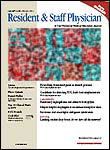“Shock and Kill†Study Targets Dormant HIV
A study out of the University of Montreal explores newer, more accurate methods of targeting "HIV reservoirs" and tests two drugs, originally developed for cancer treatment, for their ability to bring the virus out of hiding.
Researchers from the University of Montreal hope they’re clearing a new path to treatments, and eventually perhaps a cure, for the human immunodeficiency virus (HIV).
In a new study published in Cell Host and Microbe, they discuss a method of targeting dormant HIV that they believe is 1,000 times more accurate than currently employed strategies, allowing them to find one cell in a million that may be hiding the virus. Even despite antiretroviral therapy (ART), HIV takes refuge in “HIV reservoirs” where it can lurk for years.
The study authors believe that by precisely pinpointing where the virus hides, it can be reactivated, drawn out, and killed. Its reservoirs are typically in CD4+ lymphocytes, which are white blood cells.
Samples were collected from 30 HIV-positive patients, both before and after they began ART treatment, and they were examined to identify the virus in CD4+ cells.
Following this, they tested two different drugs — bryostatin and a derivative of ingenol. Both were originally developed for cancer treatment, but may have potential use against HIV.
“In the laboratory we found that the two drugs wake up different populations of CD4+ T lymphocytes, thus waking up different reservoirs. The ingenol derivative activates a population called central memory cells. These cells can live for years in patients, all the while hiding the virus,” says Amy Baxter, first author in the study, in an accompanying press release from the University. “Therefore, it is particularly important to target these reservoirs.”
From patient to patient, there is a degree of variability in where exactly the virus is hiding, meaning individualized treatment would likely be necessary.
Before that becomes a consideration, however, there still lies a long road. Lab trials of blood samples are an encouraging first step, but clinical trials will be needed to ensure that the reactivated HIV isn’t able to infect other cells. The next step will to be try these methods on monkeys.
